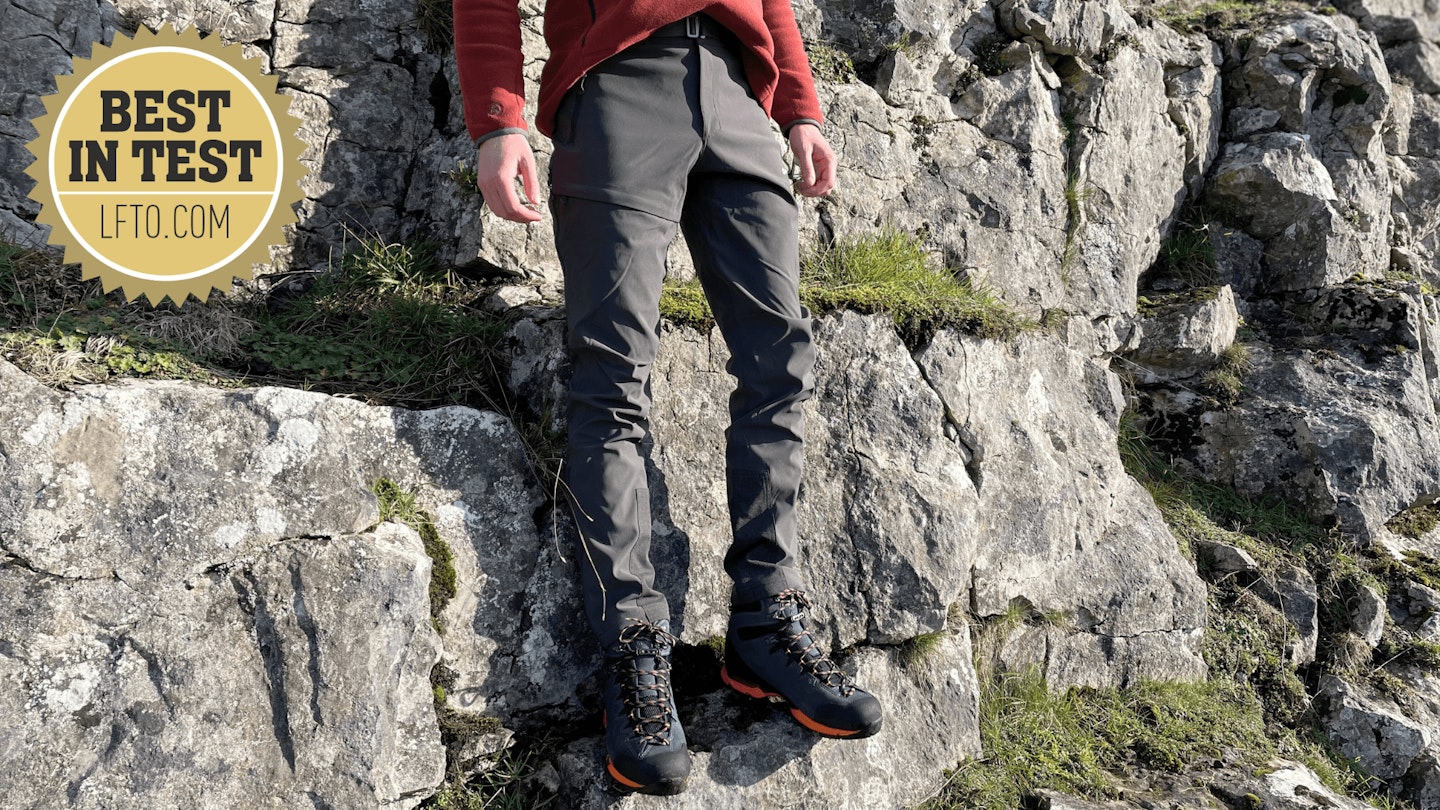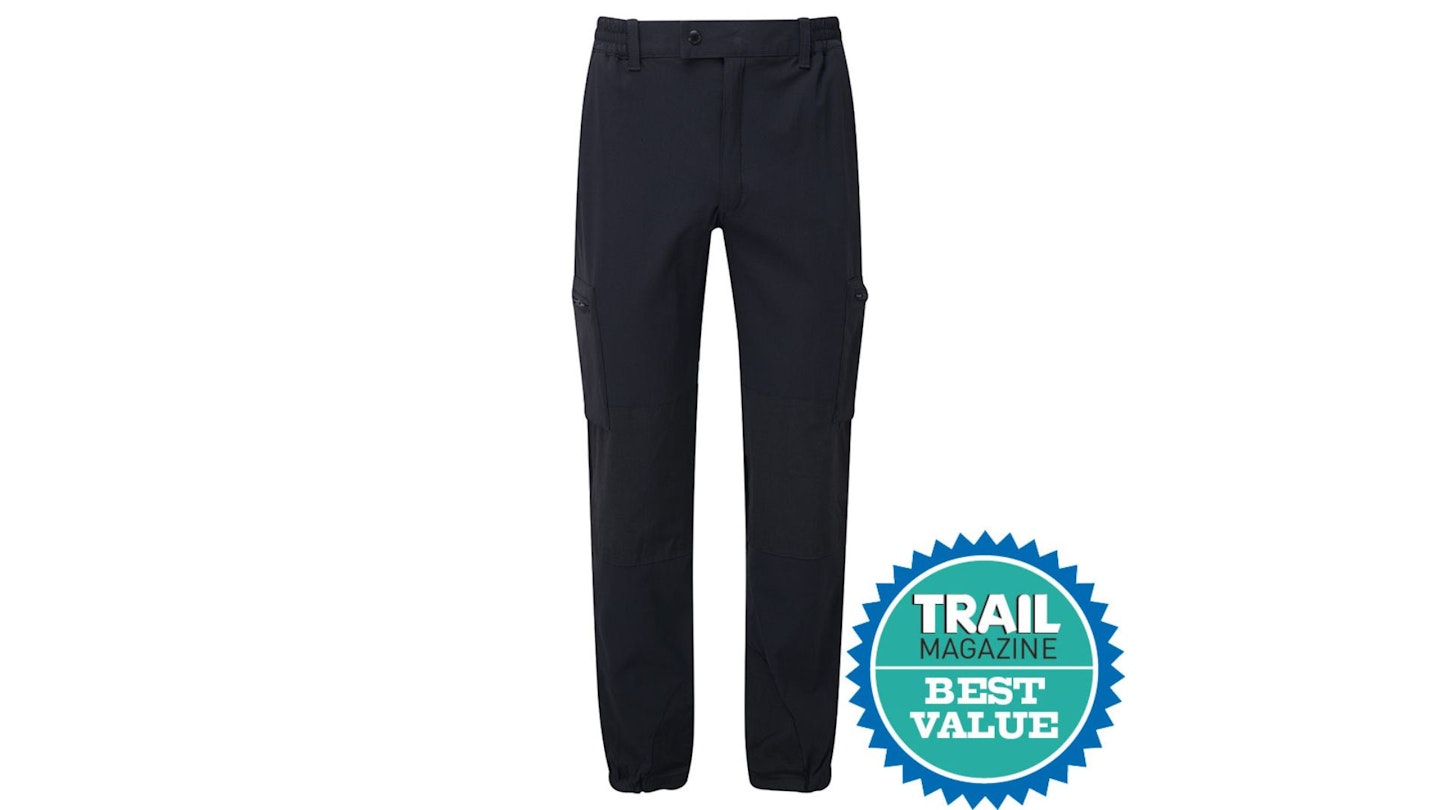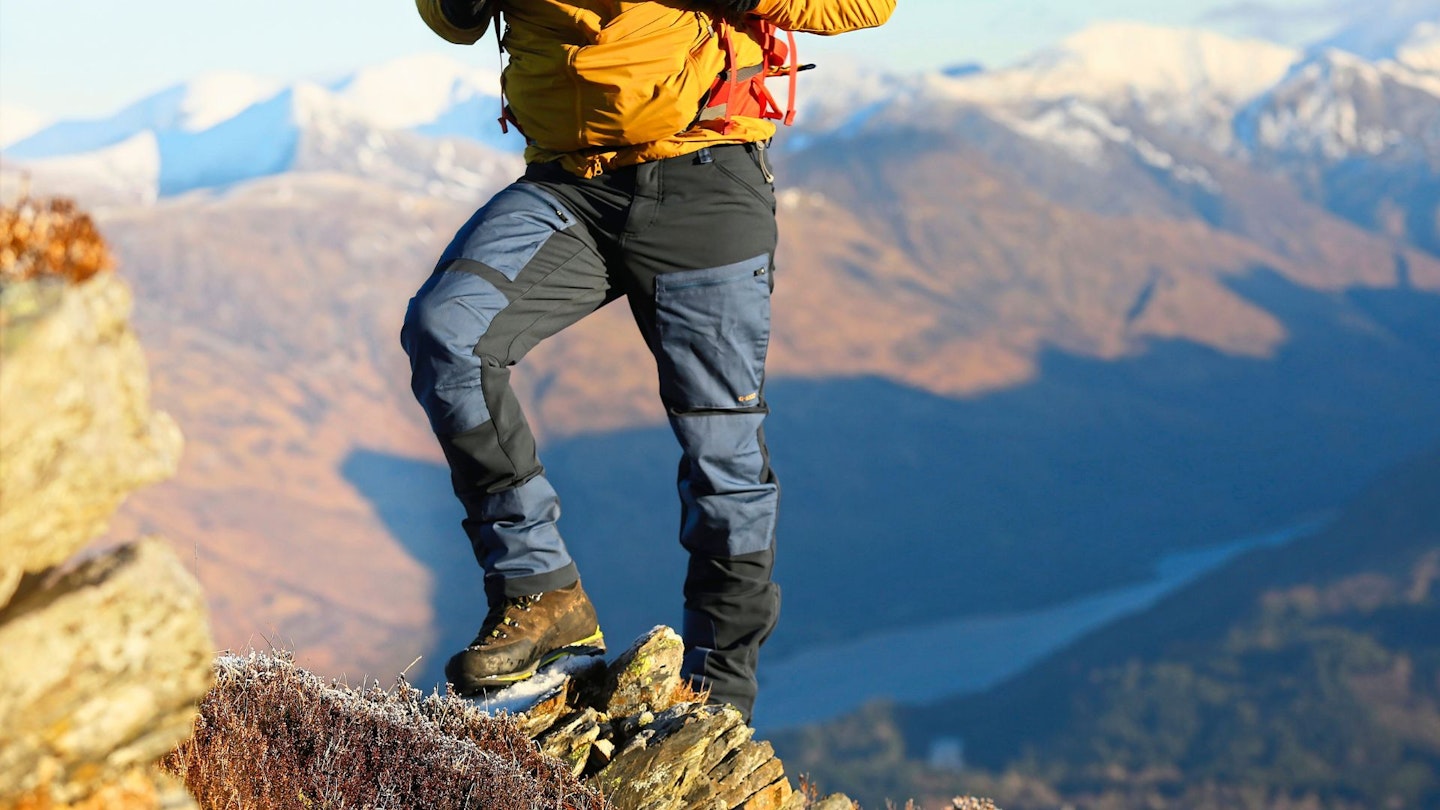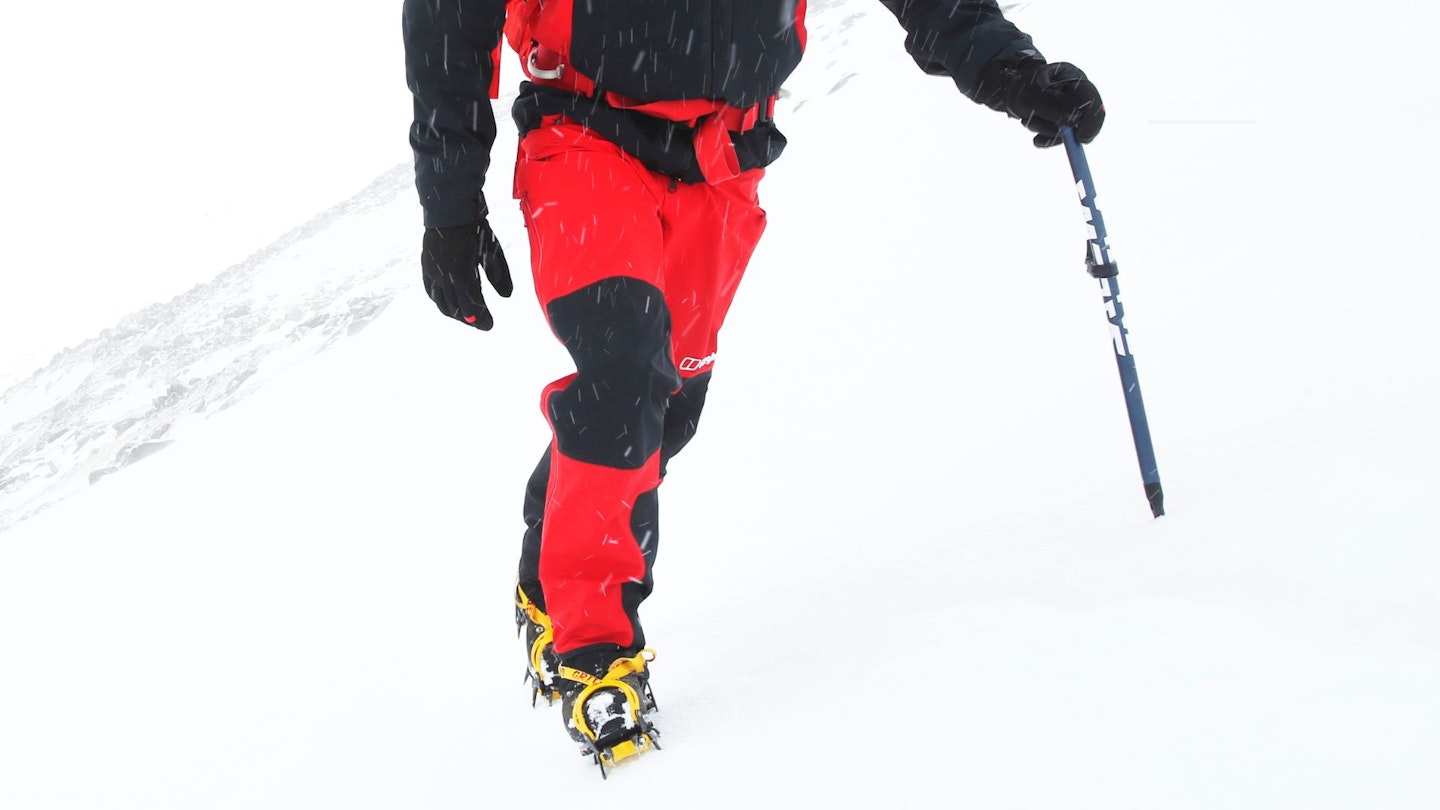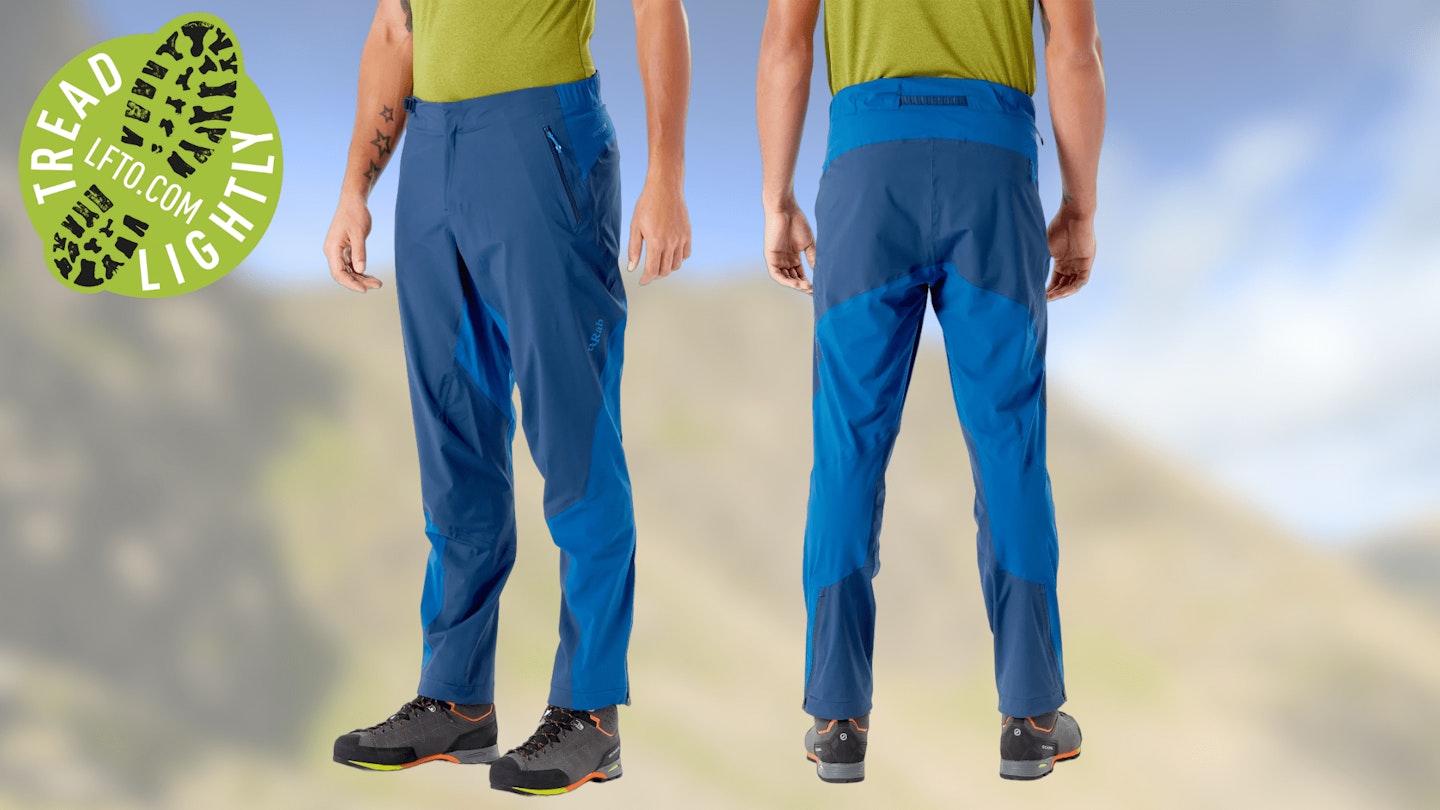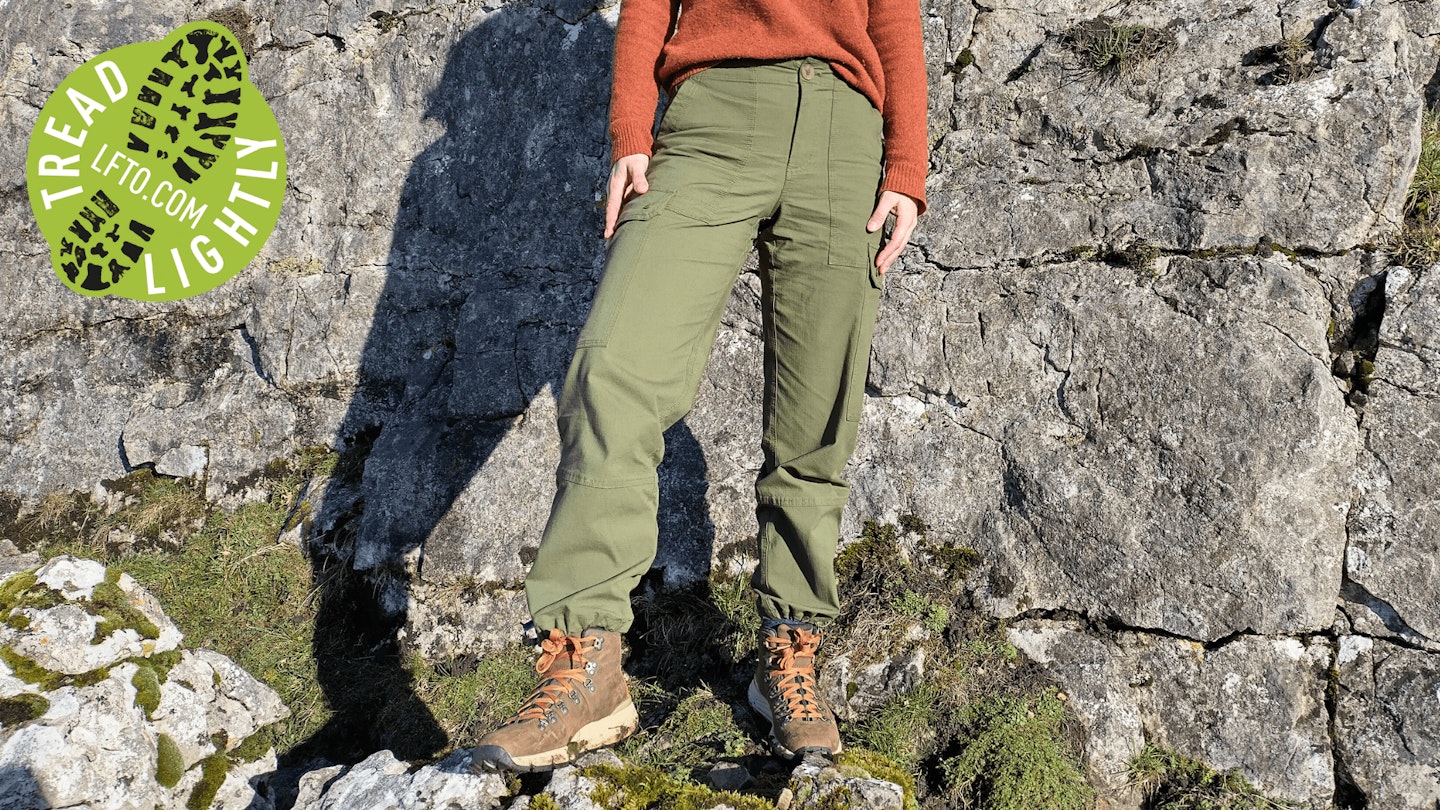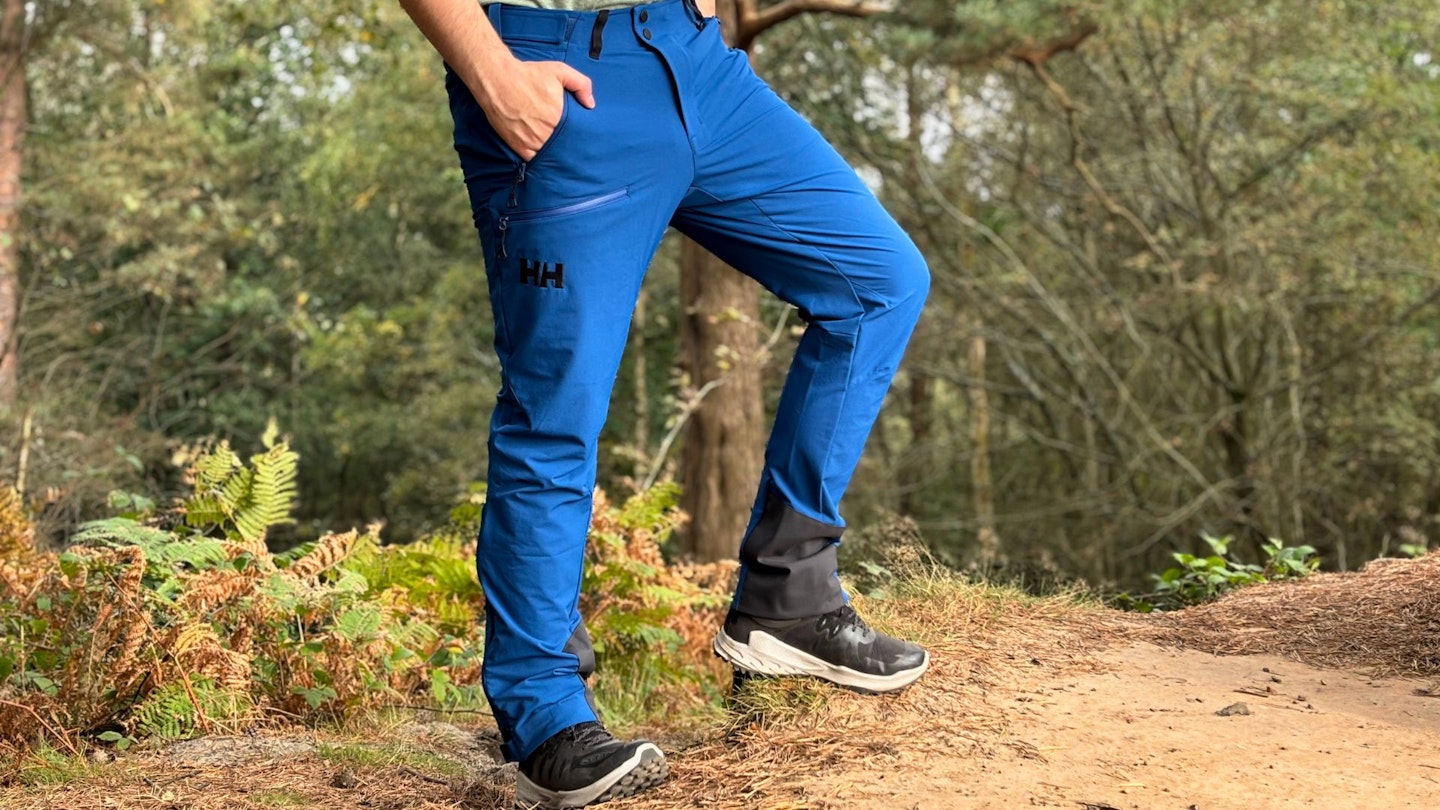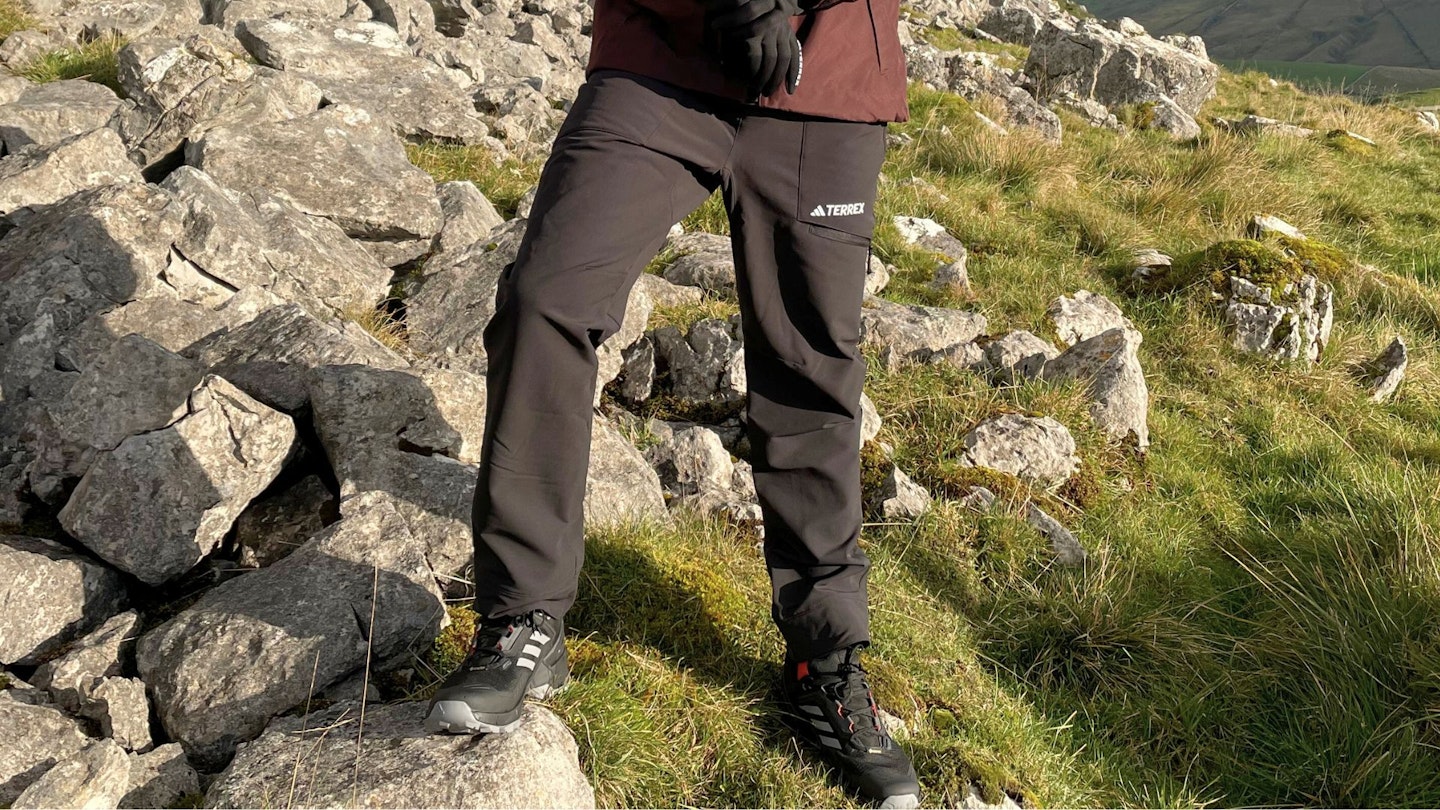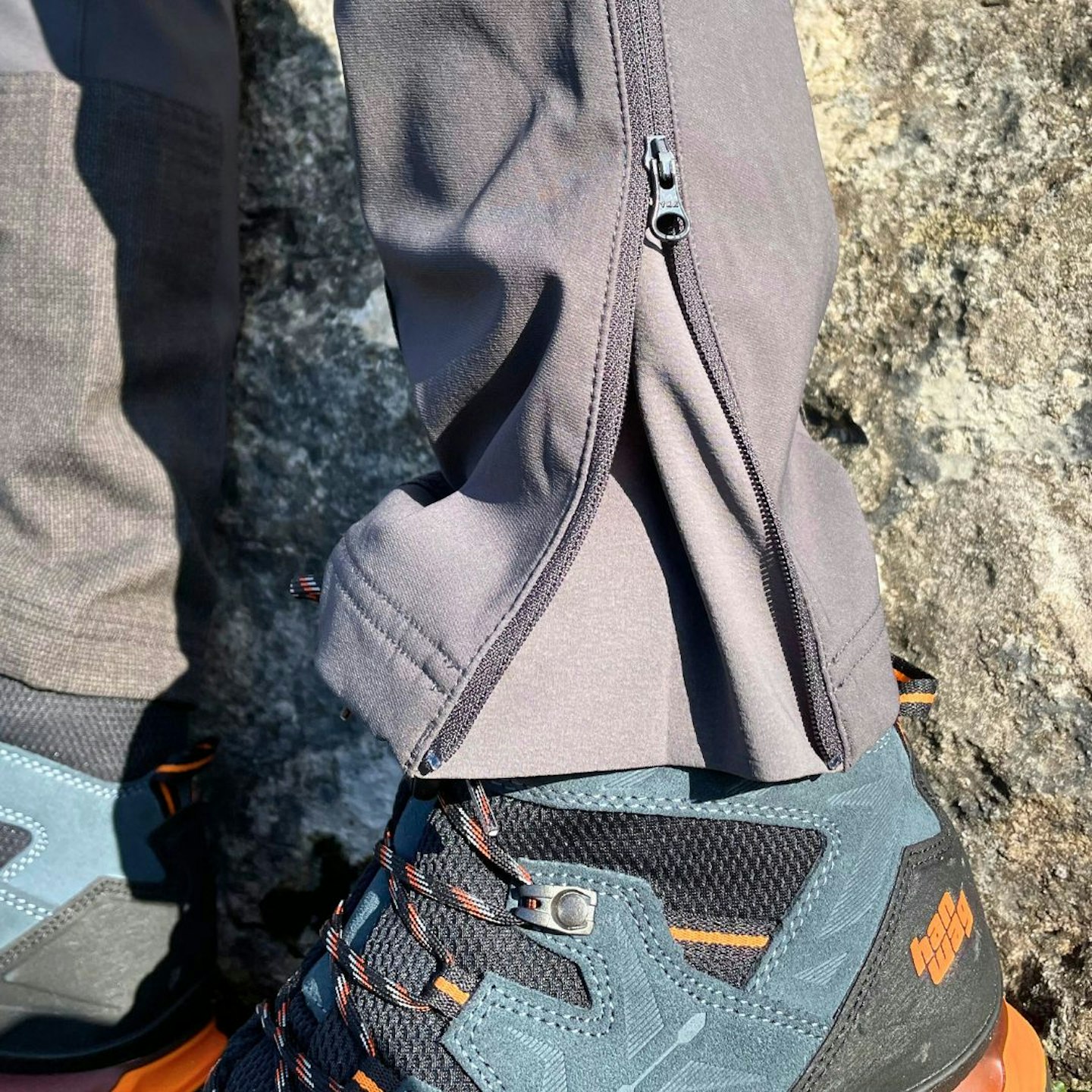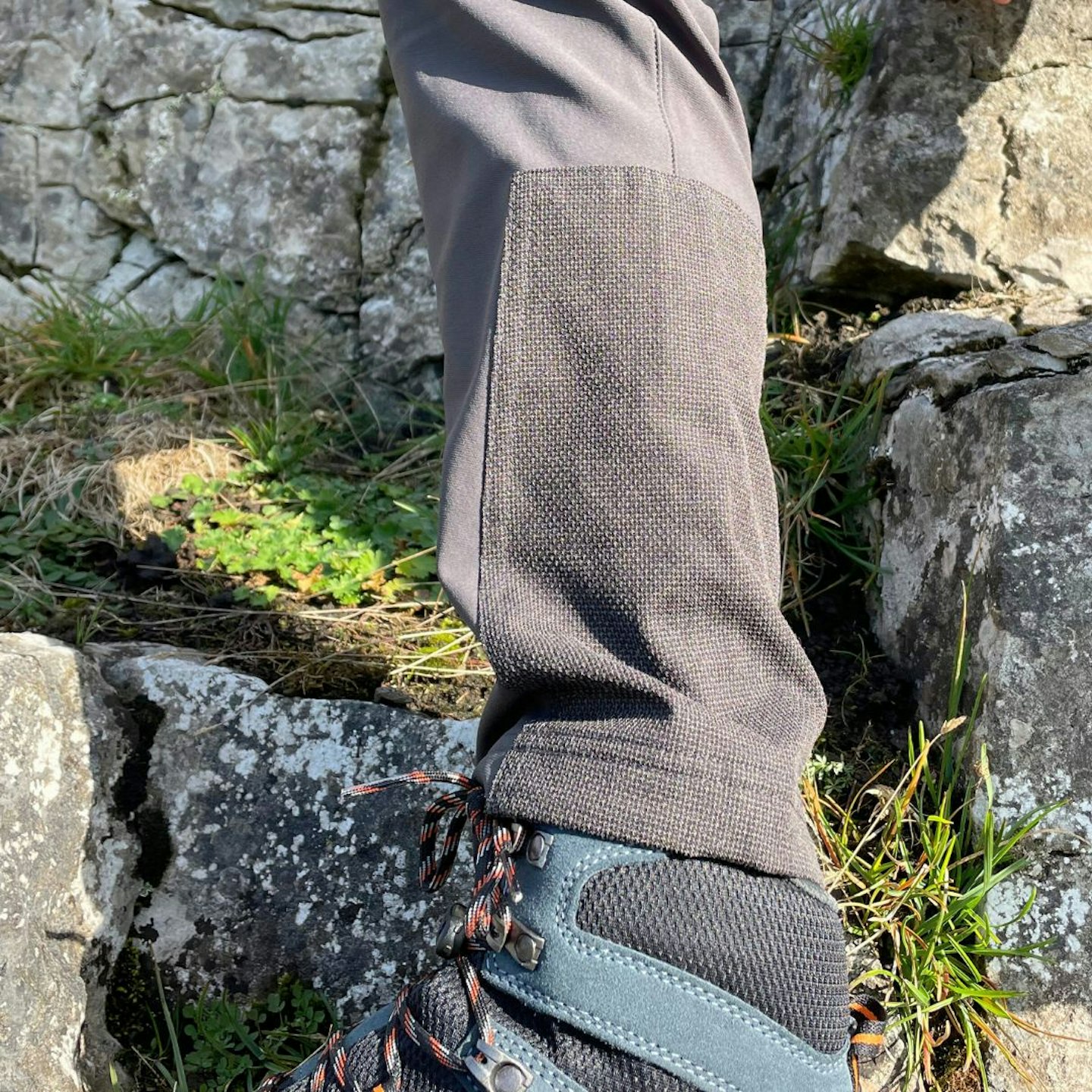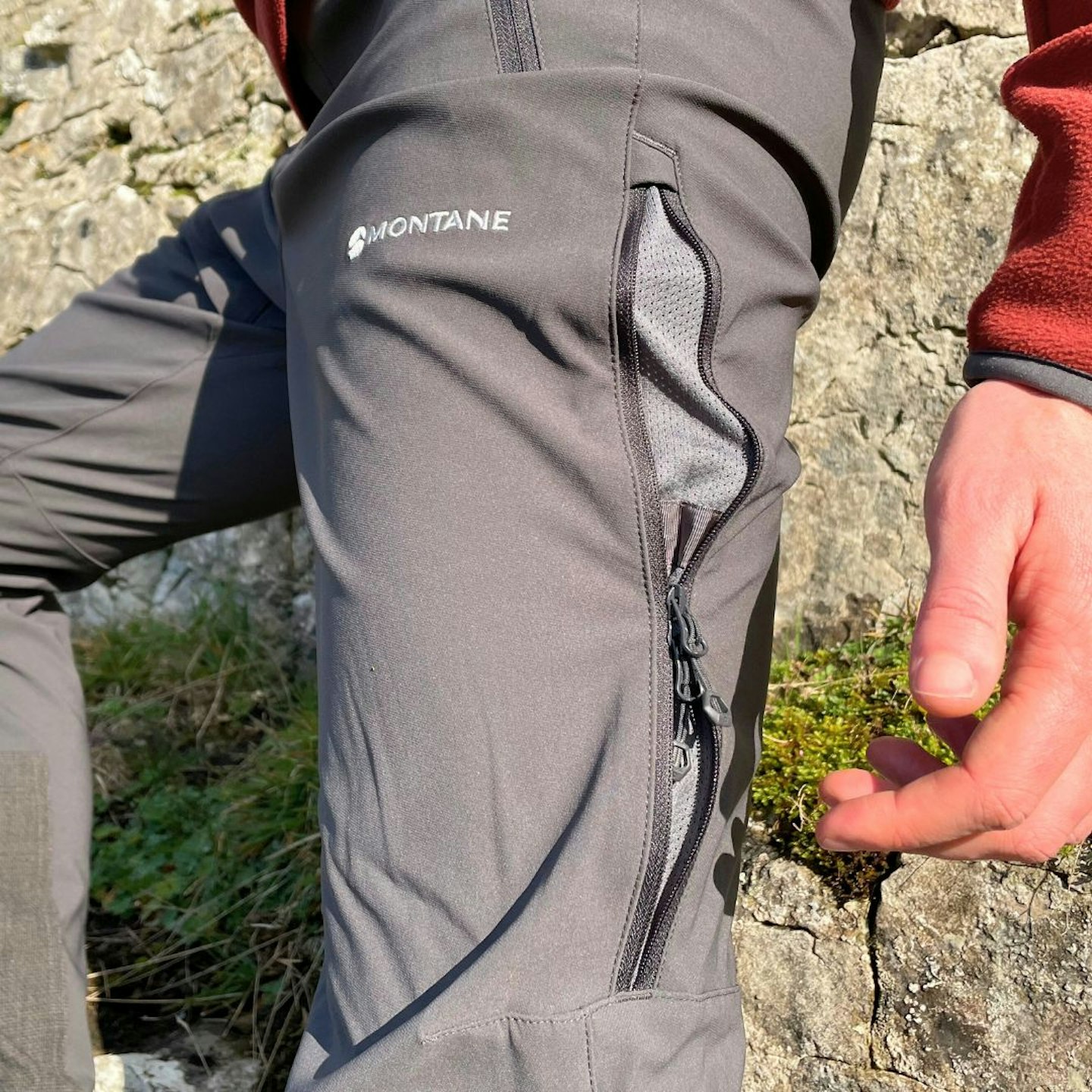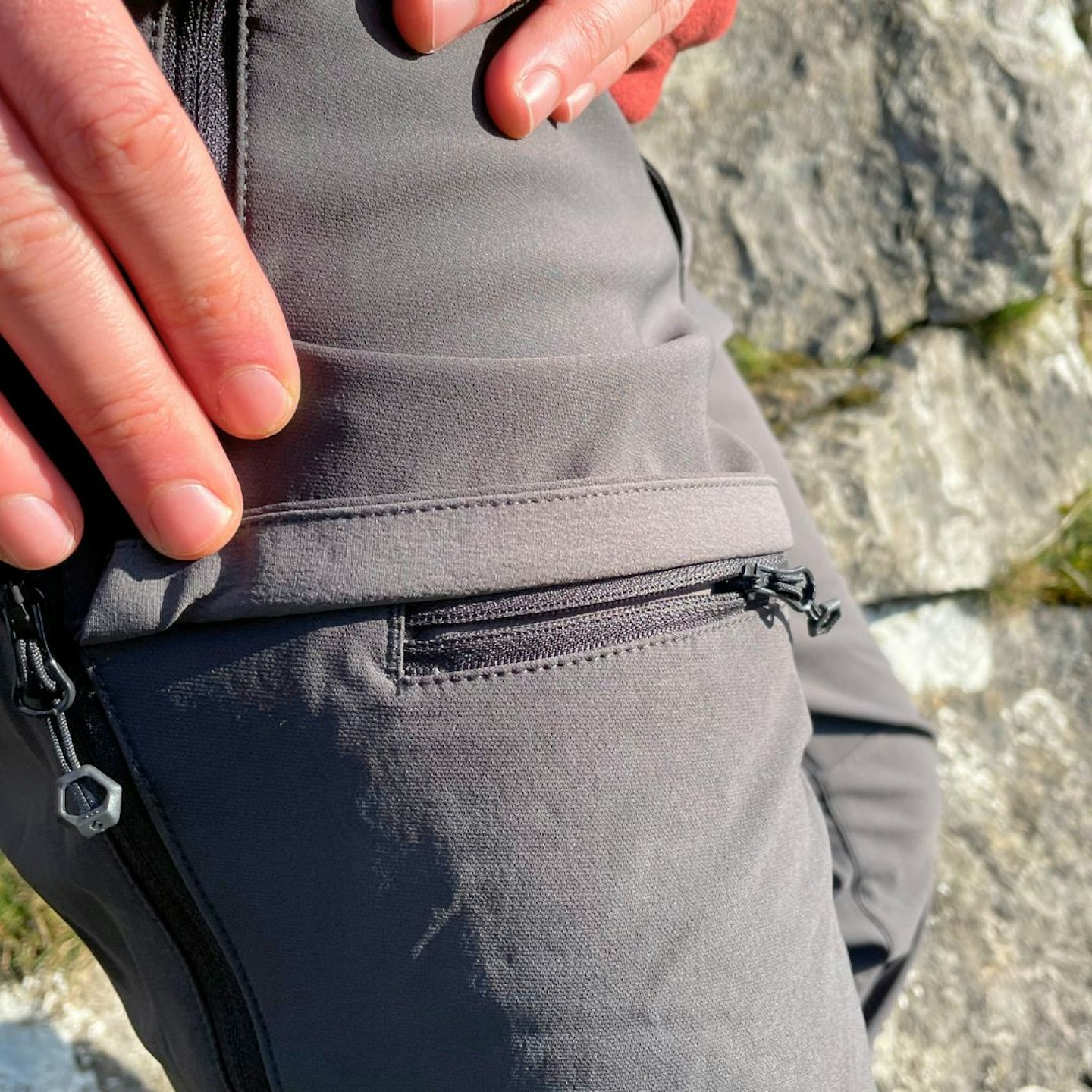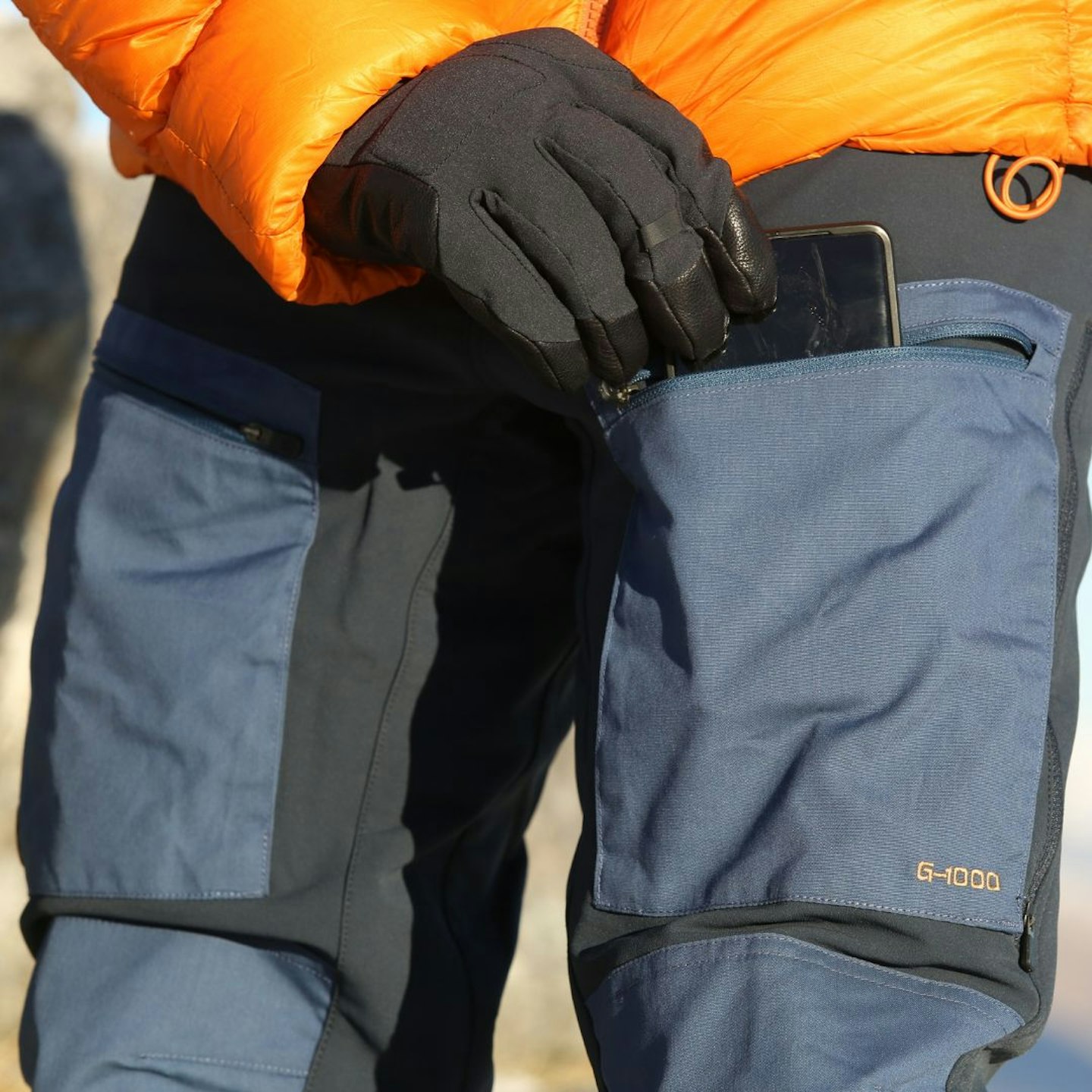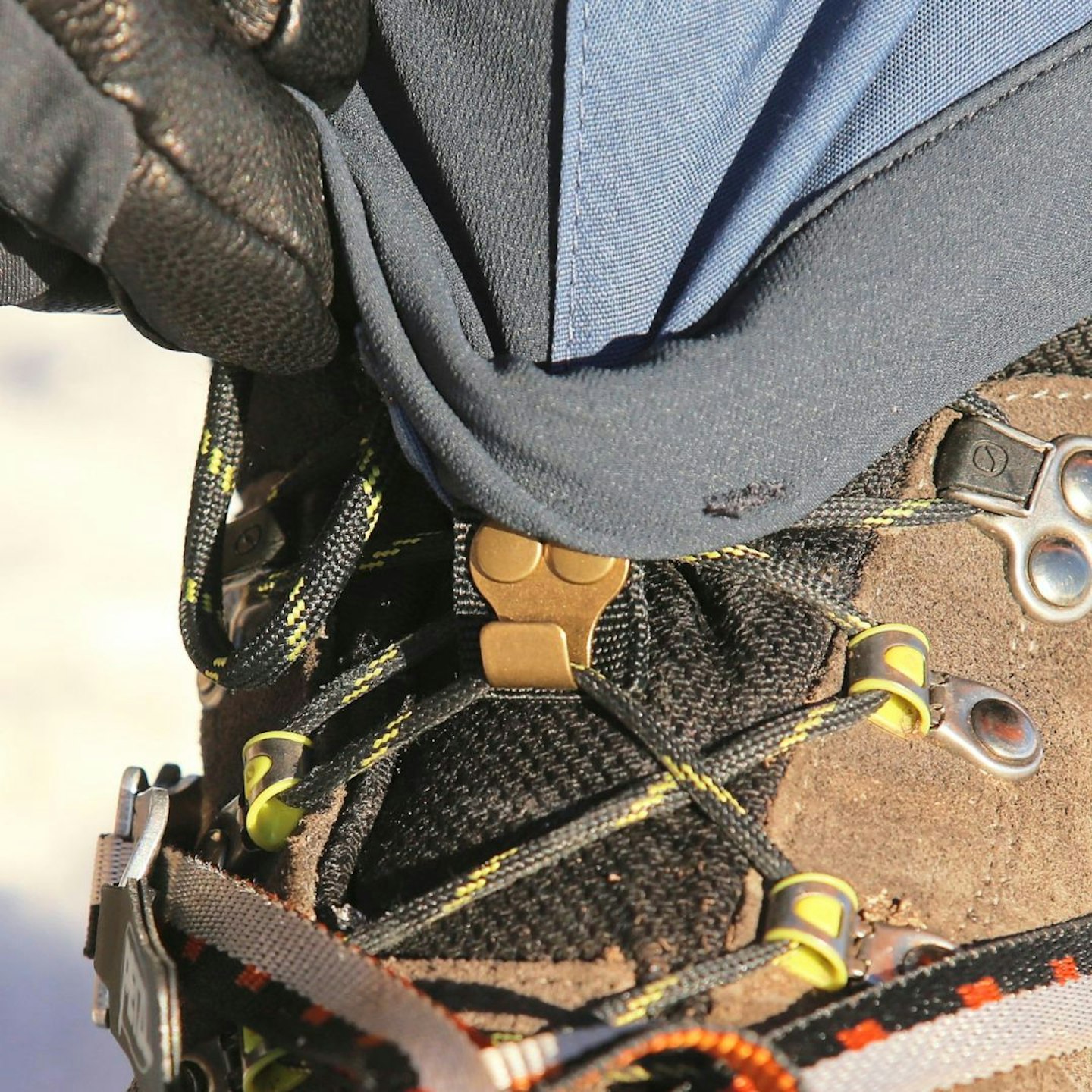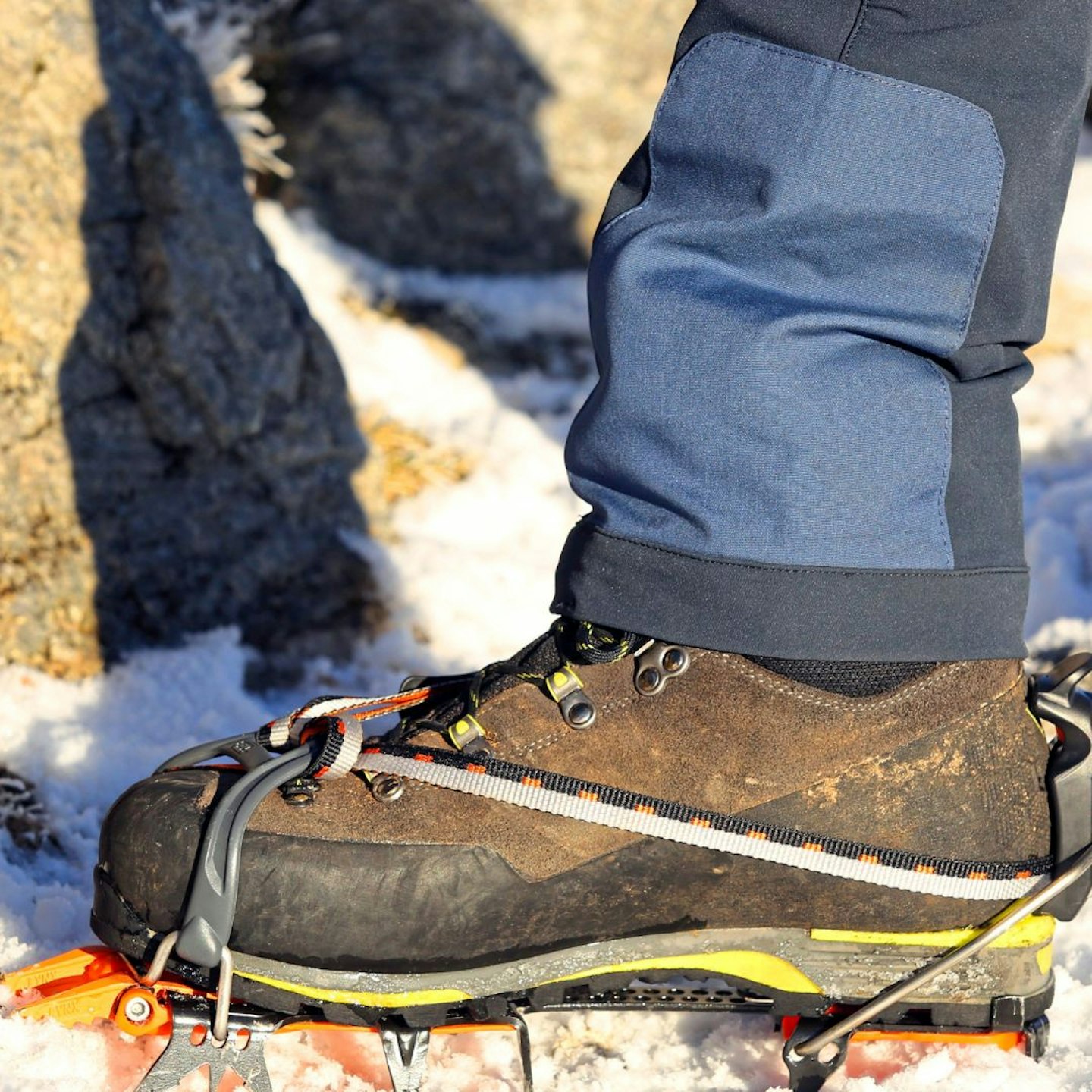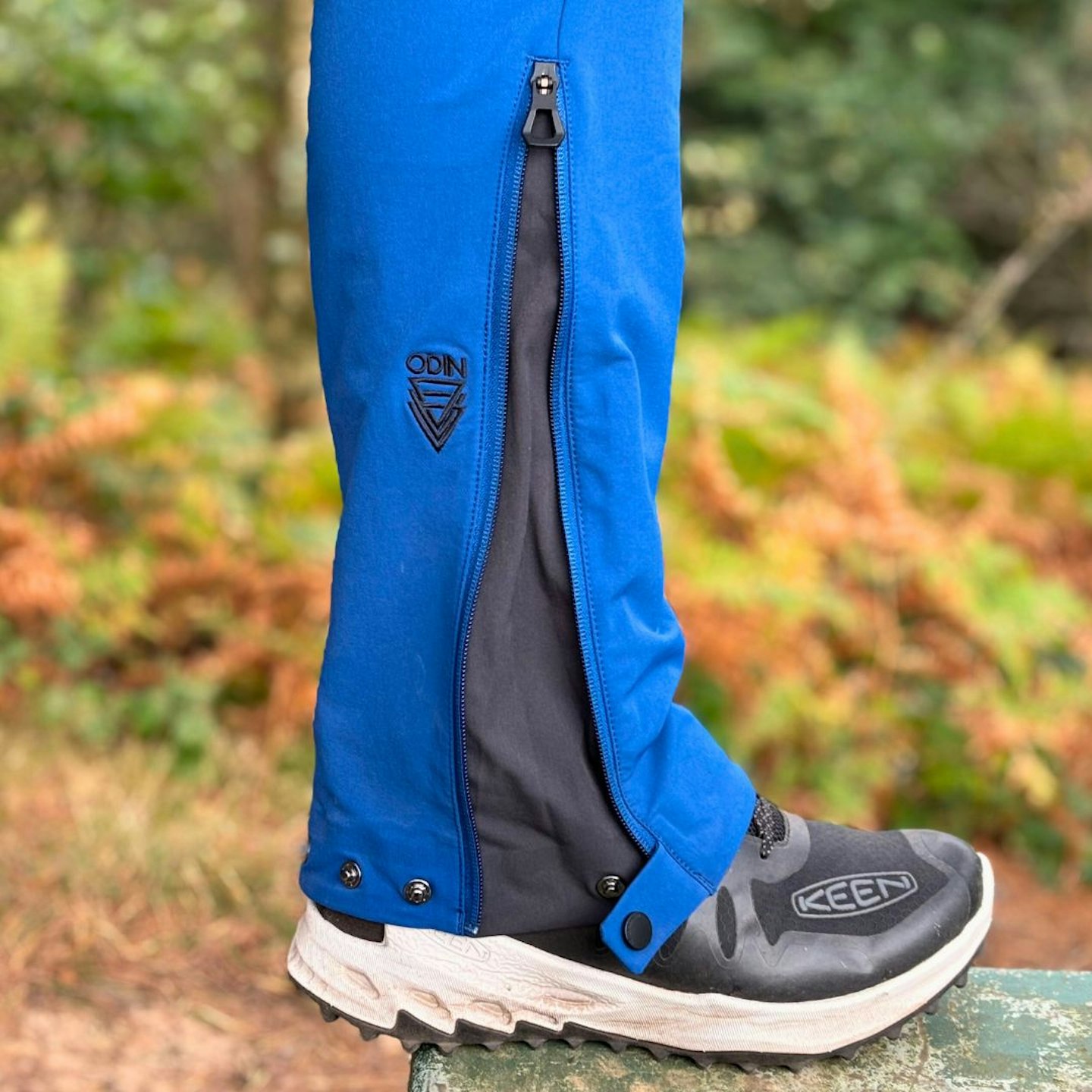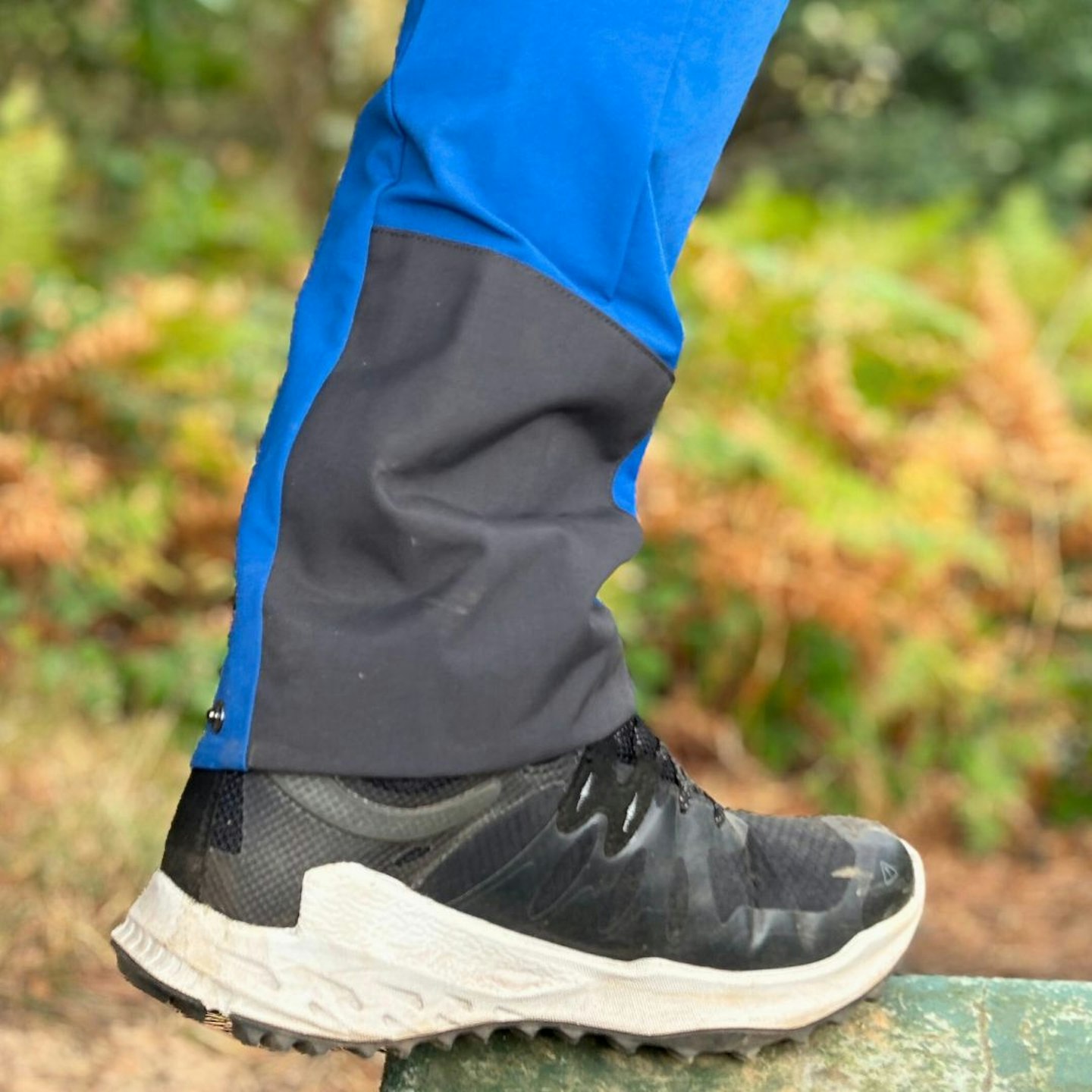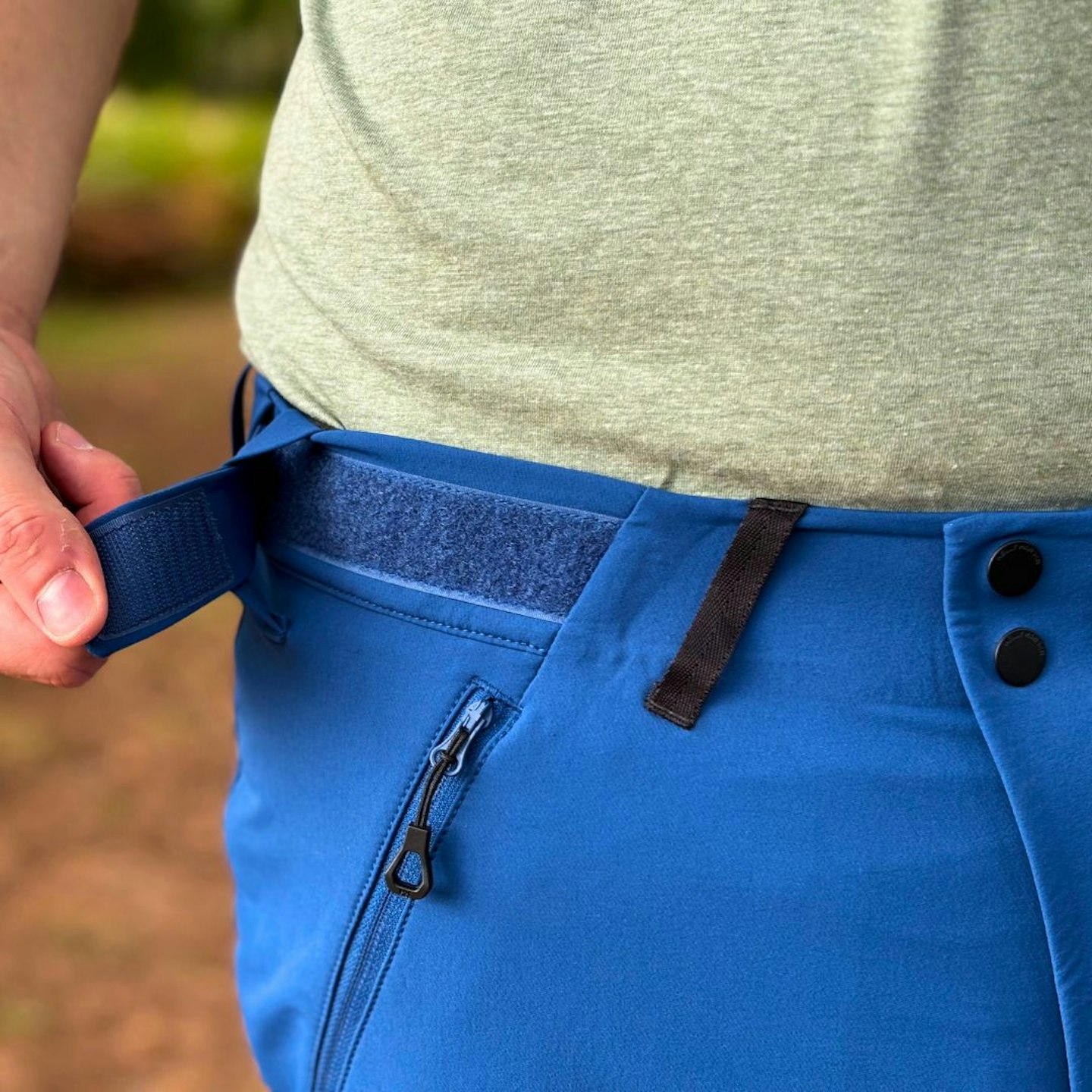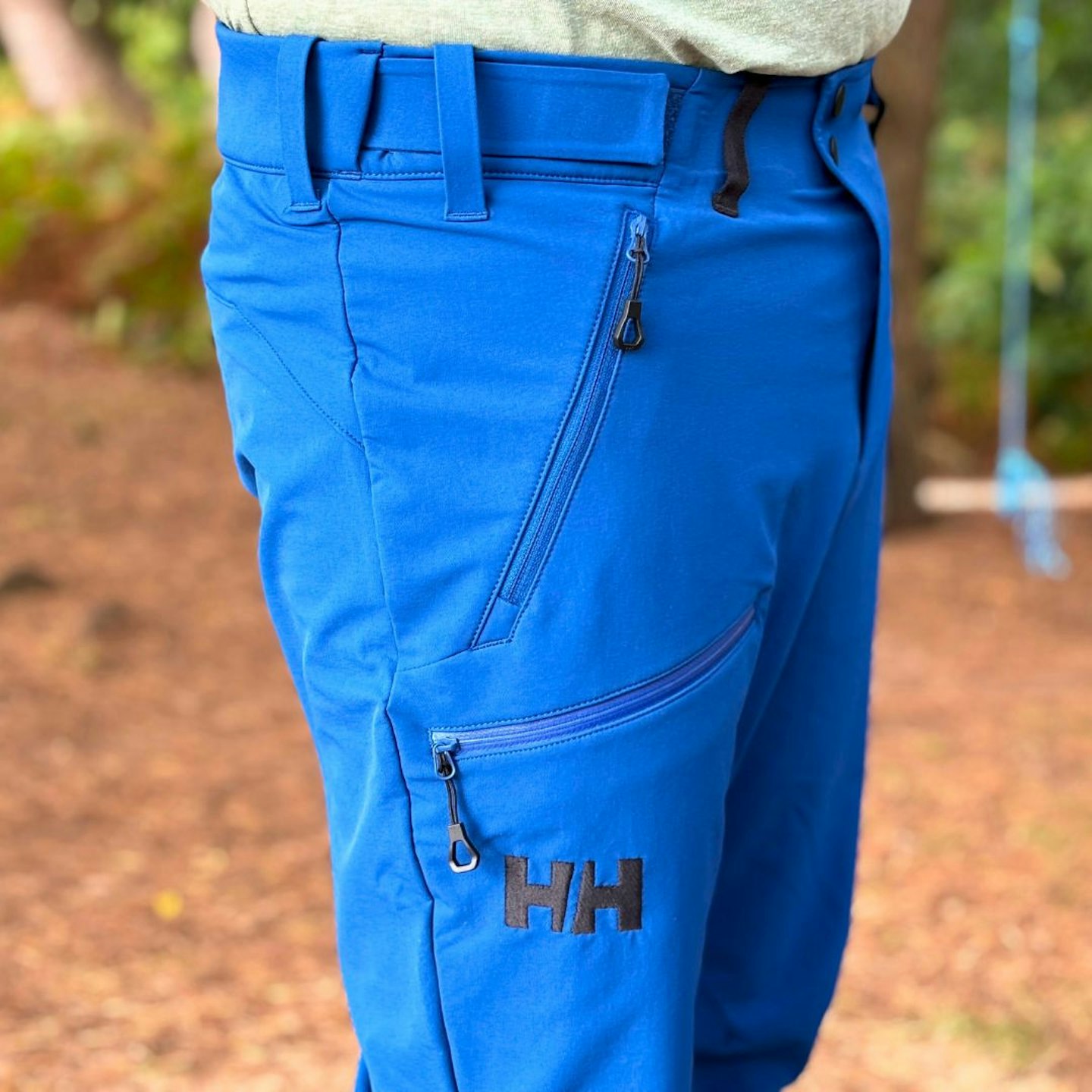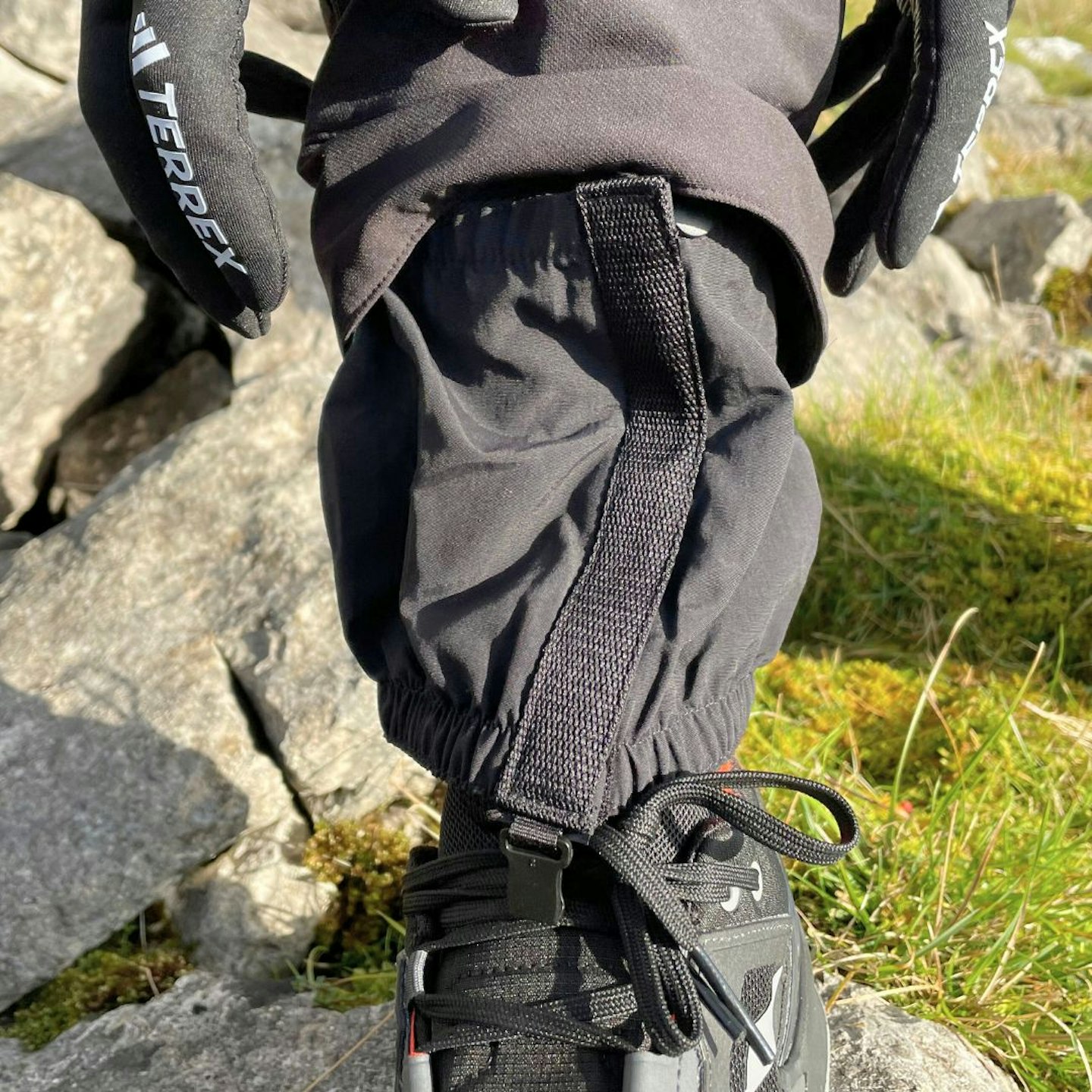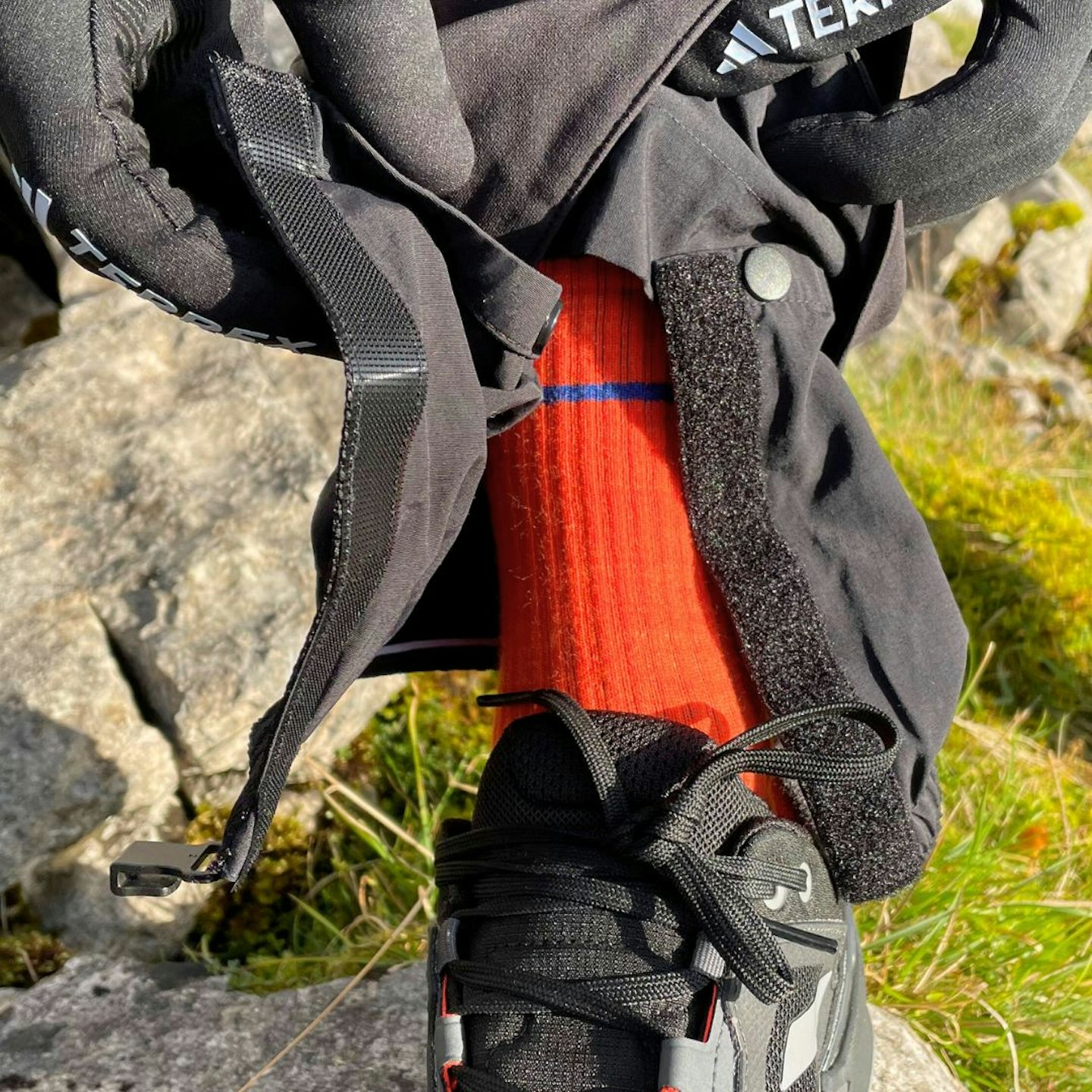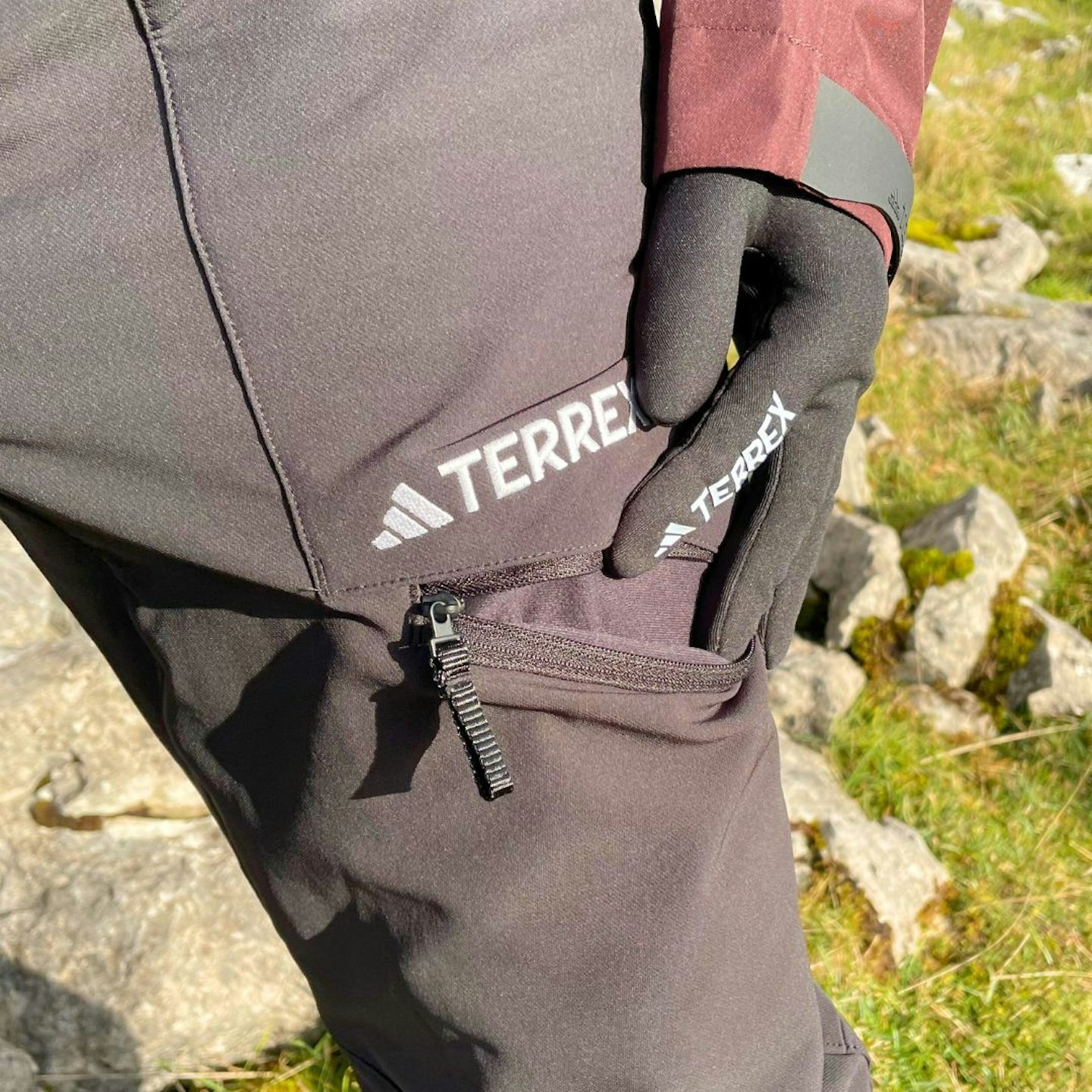On more than one occasion climbing up a Scottish Munro in summer we've shunned walking trousers in favour of shorts. We've always taken long trousers or waterproof overtrousers with us of course, but were sticking to the approach of being bold and starting cold.
Although in summer, early autumn, and late spring, we've often been able to stick with the short trousers, the colder months of the year in temperate regions demand warmer winter walking trousers. This is because they provide not just improved protection from the elements but also from scrapes and scratches inflicted by rugged terrain.
What are the best winter walking trousers of 2024?
Best in Test:Montane Tenacity XT Pants
Best Value: Keela HW Op Trousers
Best waterproof winter trousers: Berghaus MTN Seeker GTX Pant
Best casual winter walking trousers: BAM Caundle Active/Harbourn Cargo Trousers
Although winter walking trousers are heavier than their lighter summer counterparts, they are still a moderate weight compared to jeans for example. They're also better at dealing with wind and precipitation, while remaining stretchy and breathable.
Best winter walking trousers reviewed
This is what happens when you take the ever-popular Montane Terra Mission Pants and beef them up. We found these half-kilo trousers (women's version called Terra Stretch XT) to be durable and protective, yet very comfortable. While still asking a premium price, they’re also less expensive than many rivals too.
They’re made using a 260gsm nylon-polyester blend with four-way stretch, coated with a PFC-free water repellent treatment.
In addition, there is a panel of Schoeller-Keprotec Kevlar on the instep, which was originally developed for motorcycle racing and we found to it be extremely tough. The trousers also feature a zipped gusset to accommodate mountaineering boots if required.
Though thick and warm, mesh-lined thigh vents are effective at dumping heat if the going gets too warm. There are also four zipped pockets: two handwarmer pockets, one on the right thigh, and one rear. All of these are modestly sized but large enough for a phone or small snacks.
Pros
- Tough and warm
- Four-way stretch
- Tapered, tailored fit
- Tough reinforced instep
- Montane offers repair service
- Montane a Fair Wear Foundation member
Cons
- No large pockets
- No knee reinforcement panels
Keela’s best-known softshell trousers are its hard-wearing Scuffers, which work well for general hiking and hillwalking. But for autumn and winter use, we prefer Keela's even more rugged alternative called HW Op (‘Heavyweight Operational’) trousers.
They’re made from Keela’s Stretch-Tec Advance softshell fabric, a blend of nylon, polyester and elastane that is tough, weather-resistant, relatively quick-drying and flexible. Ripstop overlays at the knees and insteps offer added protection from abrasion.
We like that the HW Op have better storage than most trousers (including the standard Scuffers), with two zipped thigh pockets, two hand pockets and a back pocket with a Velcro stormflap. The hand pockets also have zipped security pockets hidden inside, which are great for stashing keys and other ‘mustn’t lose’ essentials.
The lower legs feature ankle zips and a drawcord cinch, though we prefer the more user-friendly tabs found on other trousers. Similarly, the HW Op trousers lack the zipped leg vents of some rivals.
Those niggles aside though, these are great value trousers that are extremely comfortable. Belt loops and a half-elasticated waistband keep them where they should be, and that 4-way stretch fabric ensures ample freedom of movement. We’d describe the overall cut as relaxed, which some will like, though others might prefer a slimmer fit.
Check out the women's version here
Pros
- Protective
- Comfortable
- Plenty of pockets
- Good size range
- Keela offers repair service
Cons
- No leg vents
- Poor ankle cinch
We’ve found this winterised version of our Best in Test-winning Keb Agile trousers are the ideal all-round trekking trousers for cold conditions.
Like the Montane Tenacity XT Pants, these are moderately weighty yet very comfortable. Made from double-weave, four-way stretch fabric, we loved the brushed inner, which adds warmth and comfort, as well as a slightly roomier fit to allow for thicker base layers to be worn underneath.
As we’ve come to expect from many recent Fjällräven garments, the Keb Agile Winter Trousers also incorporate recycled fibres and are finished with a PFC-free water-repellent treatment.
With reinforcements over the thigh pockets, knees, leg ends you do feel a bit like an armadillo wearing these. And because the Keb Agile Winter Trousers use Fjällräven’s G-1000 fabric, you can boost their wind and water resistance with its Greenland Wax.
Overall, these are superb, if not pricey, winter walking trousers. But there's one big issue: there's no women's version. The Abisko Winter Stretch Trousers is the closest alternative.
Check out the Women's Abisko Winter Stretch Trousers here
Read our full Fjällräven Keb Agile Winter Trousers review
Pros
- Superb comfort
- Ideal for almost any winter trek
- Should last a lifetime
Cons
- No direct women's version
- Many rivals offer better value
These are tough, weather-beating overtrousers, which use Gore-Tex Performance 3L fabric. The side zips are ¾-length for pulling over chunky footwear and venting, but there is a wealth of other practical features we found useful too.
This includes a studded ankle closure to reduce volume around the boot cuff. There’s also an elastic backed waist, and belt loops and braces attachment points for extra security.
Many – indeed most – waterproof trousers are emergency overlayers. But these are meant to be worn all day on mid-winter alpine expeditions. They’re proper mountain shell trousers that offer top-end weatherproofing, breathability, and durability – ideal for harsh winter conditions.
Check out the women's version here
Pros
- Tough
- Useful multi-use waistband design
- Great for alpine conditions
- Berghaus offers repair service
- Berghaus a certififed B Corp
Cons
- Overkill for most users
The beauty of these walking trousers is that they straddle the line between soft, comfortable, and lightweight walking trousers, and hardshell waterproof trousers.
To us, the Proflex fabric felt like softshell with stretch to match. But it is in fact a 3-layer, highly water resistant construction boasting waterproof and breathability ratings of 20,000mm HH and 25,000g/m2/24hrs respectively (on par with many premium waterproof hiking jackets).
Unlike the Berghaus MTN Seeker GTX Pants, which are unashamedly hardshell trousers, the Kinetic Alpine 2.0 is kind of a wolf in sheep’s clothing, delivering far greater weather protection than we were anticipating, but without sacrificing comfort and freedom of movement.
We found them brilliant to wear all day in the mountains, and despite being the lightest trousers on test, still tough and durable thanks to strategically placed reinforcement panels.
Check out the women's version here
Pros
- Feel more like softshell than hardshell trousers
- Highly water resistant and breathable
- Allow high freedom of movement
- Rab offers repair service
- Rab a Fair Wear Foundation member with Leader status
Cons
- Slim fit not suitable as overtrousers
These are the ideal trousers (there’s a Straumnes jacket too) for high octane winter activities. By utilising Gore-Tex INFINIUM, the 66° North Straumnes trousers swat away wind and light rain while providing superb breathability in cold winter conditions. As a testament to this, we’ve used them for both hiking and trail running in winter.
We’ve tested several 66° North garments over the years and the brand doesn't do things by halves. This, combined with the use of Gore-Tex means the price of these trousers is quite something. But in fairness, most top performing winter trousers wear sky-high prices.
On the plus side, while being lightweight in the relative company and lacking toughened panels for abrasion resistance, the 66° North Straumnes Trousers are still well made and 66° North offers repairs for all its gear.
We liked the soft and stretchy softshell fabric and the slimmer cut. It means that after tearing around in the frozen hills and mountains, you can return to town with a modicum of style.
Check out the women's version here
Pros
- Very breathable
- Windproof and water repellent
- Great for high-intensity outings
- 66° North offers repair service
- 66° North a certified B Corp
Cons
- They'll need a lot of use to get your money's worth
Getting the big but predictable minus of these trousers out of the way first: they’re not good in wet conditions. They’re made largely of (organic) cotton – a material that does not cope with moisture well.
However, these midweight (305gsm) cotton-bamboo walking trousers are fantastically comfortable, very durable, and warm. For cold, crisp days in the countryside or leisurely hillwalk, we loved them.
Our female tester was surprised at the weight of these trousers, and even more surprised at the level of comfort. They offer good stretch, and secure high-waisted fit, and – something desperately amiss from a lot of female legwear – large, generous pockets.
There are few nice additional touches including the rear waist adjuster and adjustable ankle cuff, too. And of course, while the fabric isn’t very weather resistant, it is noticeably more breathable than the synthetic winter walking trousers on test.
Check out the men's version here
Pros
- Fantastically comfortable
- Great breathability
- Large pockets
- Durable
- Good value
- BAM a certified B Corp
Cons
- Not for wet weather
Most of our female readers have probably heard of Acai by now – we’ve already reviewed a few of its offerings before. It has probably popped up on your Facebook or Instagram feed too. But if you’re still not that familiar with the brand, it’s an online-only, direct-to-consumer company that specialises in outdoor legwear ‘made by women for women’.
Fusing the contemporary style of skinny jeans with performance fabrics, the Thermal Skinnies are Acai’s heaviest-weight trousers, designed for cold weather. They retain Acai’s signature casual styling – riveted front pockets, twin back pockets (one of which is zipped), belt loops and a rear leather-look logo patch.
On-the-hill performance is provided by a warm yet stretchy soft shell fabric, lined with a wonderfully soft and fluffy thermal fleece. The trousers also have a durable water-repellent finish for added weather protection. Main seams are double-stitched for strength too.
Our female tester loved the fit, which offers excellent freedom of movement, and the high rise to keep your back and tummy protected. She also appreciated the fact that they come in an extremely wide range of sizes, plus four leg lengths.
Her only concern was that although they certainly feel warm enough for winter wear, the polyester fabric doesn’t feel as robust as the toughest trousers. Still, provided you’re not tackling technical terrain, they should hold up well.
Pros
- Lightweight
- Stylish
- Warm and weather-resistant
Cons
- Skinny fit might not suit everyone
- Fabric not the toughest
These trousers have much in common with our Best in Test Montane Tenacity XT trousers.
We found the Odin Huginn 2.0 (women's version called Muninn 2.0) trousers to be comfortable and protective, while offering good breathability for when the going gets intense.
There is a lot going on down at the bottom of these trousers. The instep has a reinforced panel; there is a zipped gatier and two snap adjustments; and there's a lace hook. But they're practical features, all working to improve durability, comfort, and protection.
We like the zipped pockets and the Velcro adjustable waistband is easy to use, and can also be used with a belt.
It's tit for tat between these and our Best in Test. However, the Odin Huginn 2.0 pants do miss out on the useful leg vents. Also, being £10 less and with an in-house repair service on hand, the Montane trousers have an ever so slight edge.
Pros
- Good stretch and freedom of movement
- Durable
- Decent breathability
- Bluesign-approved and PFC-free DWR
Cons
- No reinforcement on high-wear areas
- Only one leg length
For general cold weather hillwalking and hiking, these Xperior trousers from Adidas do a great job.
They're less expensive than much of the high-performance competition from the likes of Montane and Fjällräven for example. Yet, we found them to be comfortable, warm, and reasonably durable.
Without any reinforcement in high-wear areas, these are more susceptible to wear and tear while scrambling up rocky mountainsides. However, they do offer reasonably weather protection thanks to wind-resistance softshell treated with a PFC-free DWR, and built-in, removable gaiters.
We also liked how their regular fit and four-way stretch offered unrestricted movement, which made things like powering up steep hillsides much easier.
A lot of hikers have been understandably suspicious of hiking gear coming from a brand that is arguably most well-known for its streetwear. But we've used a lot of Adidas Terrex gear now, and credit where credit is due, it's pretty good.
Pros
- Good stretch and freedom of movement
- Built-in, removable gaiters
- Largely recycled and PFC-free DWR
Cons
- No reinforcement on high-wear areas
- Only one women's leg length
How we test winter walking trousers
With testing winter walking trousers, we know it's not just a case of wandering around a cold moorland path. We test their comfort and performance in more rugged mountain conditions.
We investigate every aspect of walking trousers, from the quality of construction to how good the pockets are to how sustainably they're made. The trousers tested and recommended here were tested by several members of our team.
Read more on how we test here.
How do I choose winter walking trousers?
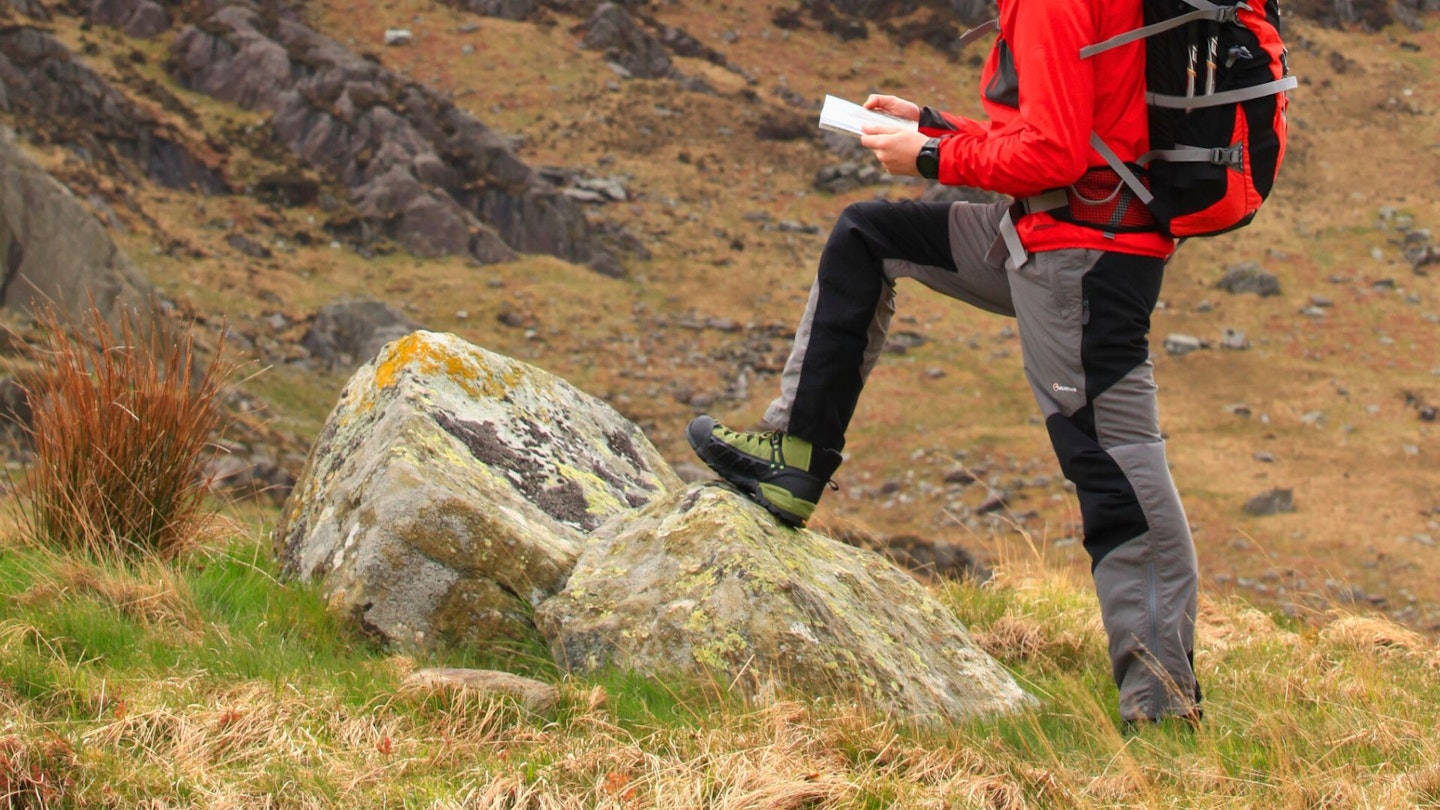
Increased toughness and durability
Look for trousers than have reinforced fabric panels on high-wear areas like the knees and seat. Many trousers also have scuff or kick patches at the ankle to protect from boots and crampons. The toughest trousers have double-stitched or even triple-stitched seams in high stress areas for added durability on the hill.
Increased weather resistance
Most technical mountain trousers are made from softshell fabric, which is a tightly woven nylon or polyester blend with elastane for stretch and a durable water-repellent (DWR) finish. Others are made from robust and breathable polycotton, which can often be waxed for added weather protection.
Ventilation
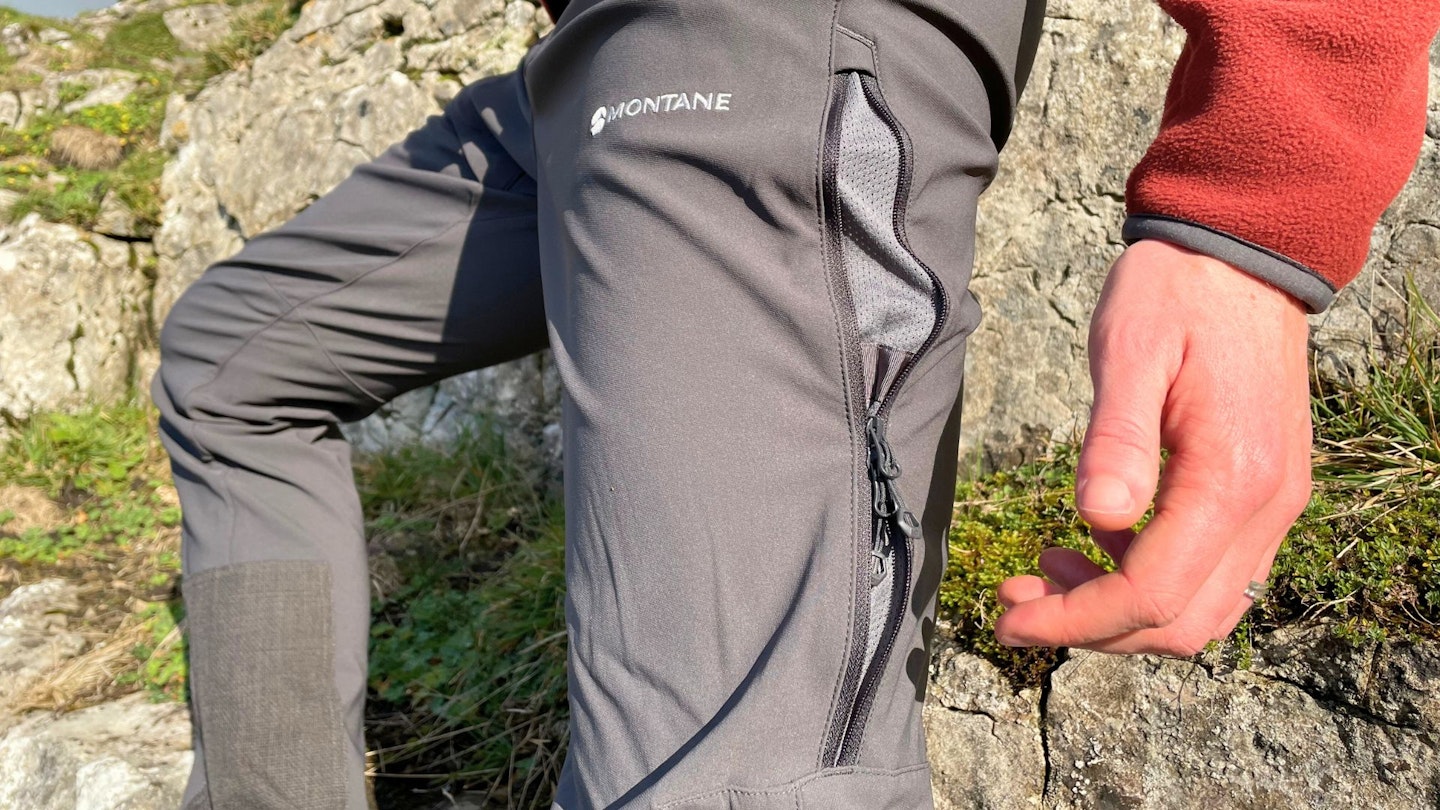
Thigh or lower-leg vents can help to dump heat and can also be unzipped for better temperature regulation if bad weather means you’re forced to put on overtrousers.
Comfort and fit
An elasticated or Velcro adjustable waist ensures a better fit, though some use a belt, which works well too. A fleece or microfibre-lined waistband offers extra comfort and a high rise protects the lower back better, particularly when scrambling or wearing a rucksack.
Adding elastane (also called spandex or Lycra) to a fabric provides stretch, giving better freedom of movement. Two-way stretch fabrics stretch either vertically or horizontally. Four-way stretch fabrics stretch in both directions, crosswise and lengthwise.
Pockets
Zipped pockets keep items safe when out walking. Large pockets that will accommodate a map are particularly practical, but make sure they are sensibly placed, so as not to restrict leg movement.
Ankle cuffs and gusset
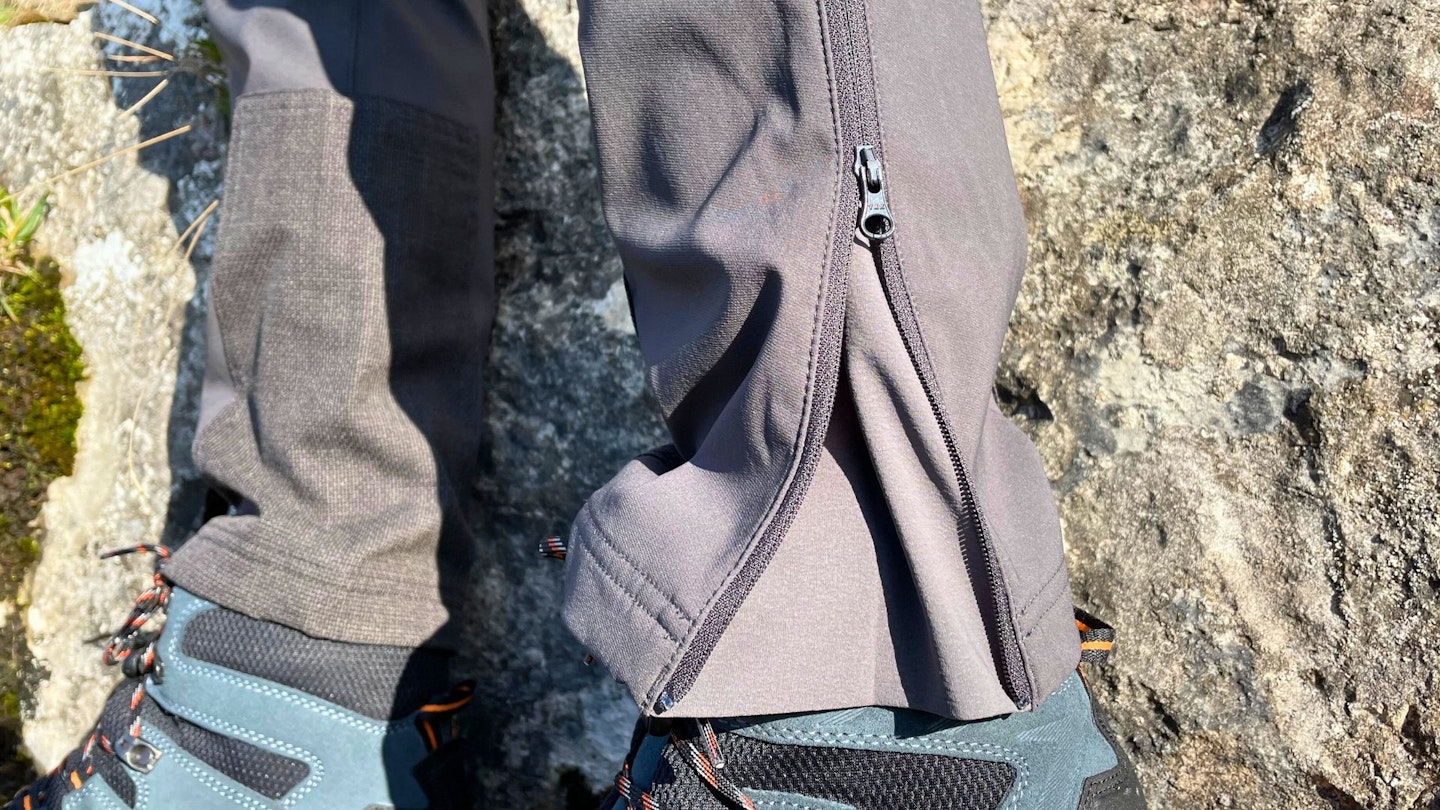
Adjustable cuffs with a press stud, tab or strap closure and/or a zipped gusset permit a closer, more streamlined fit. This helps you see where you're putting your feet for greater precision on technical terrain, and allow trousers to be worn with bigger mountaineering boots.
Lace hooks
Some technical walking trousers have an integrated lace or boot hook at the ankle cuff to stop the cuff riding up and to also help prevent debris from getting into your boots.
How do I clean walking trousers?
To get prolonged performance and durability from your hiking trousers, make sure to wash them with an outdoor gear wash from Grangers or Nikwax instead of laundry detergent.
This helps the fabric retain its breathability but also its water repellent treatment if it has one.
And if your walking trousers suffer a tear, rip, broken zip, or some other ailment, there are a number of outdoor retailers and repair agents (such as Cotswold Outdoor and Lancashire Sports Repairs) that have extensive repair services. Some brands (such as Rab, Alpkit, and Berghaus) that have in-house repair services too.
Highly recommended

12.
Nikwax Tech Wash
Highly recommended
Get half-price digital OS Maps. Trail and Country Walking magazine members get 50% off an annual subscription to OS Maps for 12 months. Find out more here.
Don't forget to subscribe to the Live For The Outdoors newsletter to get expert advice and outdoor inspiration delivered to your inbox!
Chris Williams is a Digital Content Writer for Live For The Outdoors. He trained as a journalist in New Zealand and has been working on Live For The Outdoors since 2021.

